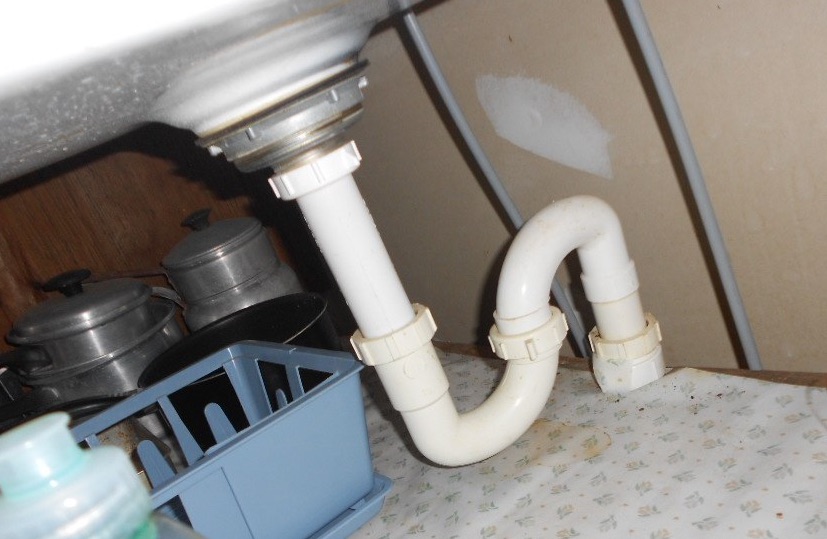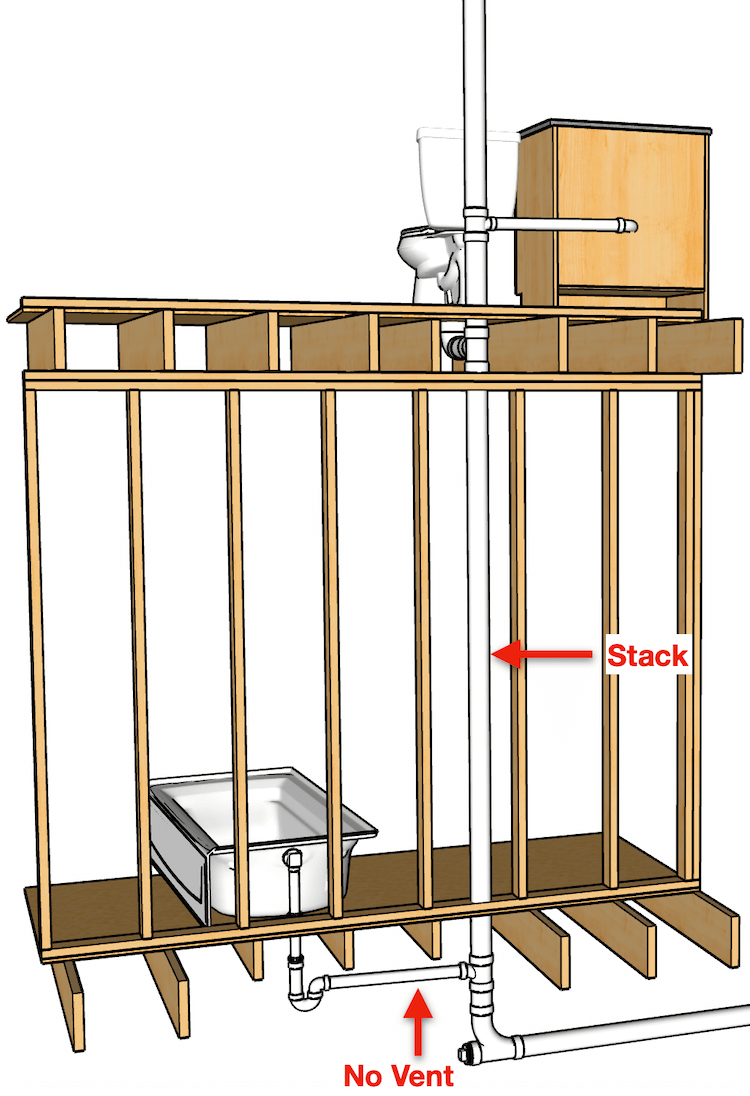The Critical Role of Proper Ventilation in Plumbing Systems
The Critical Role of Proper Ventilation in Plumbing Systems
Blog Article
This article below in relation to What Are Plumbing Vents and Why Are They Important? is absolutely intriguing. Check it out for your own benefit and decide what you think about it.

Appropriate ventilation in pipes systems is typically forgotten, yet it is important for preserving the functionality and safety of your home's pipes. Air flow helps manage air pressure, protect against the build-up of unsafe gases, and guarantee the efficient elimination of waste. In this overview, we will check out the significance of appropriate plumbing ventilation, how it functions, and the advantages it gives your pipes system.
Comprehending Ventilation in Pipes
Air flow in pipes describes the network of pipelines that permit air to stream with the drainage system. These vents serve multiple objectives, including managing atmospheric pressure within the pipelines, preventing drain gases from entering the home, and aiding in the smooth flow of wastewater.
How Ventilation Functions in Pipes Equipments
Atmospheric Pressure Law
Correct air flow maintains well balanced atmospheric pressure within the pipes system. When water moves with pipelines, it displaces air. Without ample air flow, this displacement can produce negative stress, leading to reduce drains or siphoning of water from traps, which can create unpleasant odors to leak into the home.
Preventing Sewer Gas Buildup
One of the most vital functions of pipes vents is to stop sewage system gases, such as methane and hydrogen sulfide, from building up within the home. These gases can position significant wellness dangers and are extremely flammable. Vent pipelines allow these gases to escape safely outdoors.
Aiding in Waste Elimination
Air flow helps in the efficient removal of wastewater by preventing airlocks in the water drainage system. When air can stream easily through the vents, it permits water and waste to stream smoothly via the pipes, decreasing the risk of obstructions and backups.
Types of Pipes Vents
Main Heap Vent
The main pile air vent, also referred to as the air vent stack, is the main vent in a plumbing system. It expands from the primary drainpipe line up through the roofing system, allowing gases to escape and fresh air to get in the system.
Branch Vent
Branch vents attach to the main pile air vent and offer private fixtures, such as sinks, bathrooms, and showers. These vents make sure that each component has appropriate air flow to function properly.
Air Admission Shutoff (AAV).
An Air Admittance Valve (AAV) is a one-way shutoff that allows air to enter the pipes system without the need for a traditional vent pipeline expanding through the roofing. AAVs are generally made use of in remodellings or locations where setting up a common air vent is unwise.
Indications of Poor Air Flow in Pipes.
Slow Draining Fixtures.
If your sinks, tubs, or toilets are draining gradually, it could be an indicator of poor ventilation. Insufficient air circulation can develop a vacuum cleaner result, making it challenging for water to drain properly.
Gurgling Sounds.
Gurgling audios originating from drains are often a result of air being sucked via water traps because of adverse pressure in the pipelines. This is a clear indication of inadequate air flow.
Unpleasant Smells.
Drain odors inside your home are a warning that your pipes system is not appropriately ventilated. This could suggest that sewer gases are not being adequately vented outside, resulting in potentially hazardous problems.
Typical Ventilation Errors.
Inadequate Vent Sizing.
Utilizing undersized air vent pipelines can bring about bad air flow and pressure imbalances in the system. It's vital to make use of vents that meet the specific needs of your pipes system.
Improper Vent Placement.
Positioning vents as well much from the fixtures they serve can minimize their efficiency. Appropriate placement makes certain that air can stream openly and successfully via the system.
Disregarding Code Requirements.
Building regulations supply specific standards for plumbing air flow. Disregarding these codes can cause a system that fails to operate correctly and might lead to expensive repairs or health hazards.
Benefits of Proper Ventilation.
Improved System Performance.
Correctly aerated pipes systems run more effectively, with less obstructions, faster draining, and much less stress on the pipelines. This performance expands the life expectancy of the plumbing system.
Improved Air Top Quality.
By avoiding sewer gases from entering your home, proper air flow contributes to much better interior air top quality, making your living environment healthier and extra comfy.
Preventing Water Damages.
Appropriate ventilation helps protect against water from being siphoned out of catches, which can result in sewer gases getting in the home and causing water damages in time.
Actions to Make Sure Correct Ventilation.
Consulting Pipes Codes.
Always speak with neighborhood plumbing codes when creating or customizing your pipes system. These codes offer the essential guidelines for correct airing vent and ensure your system meets safety criteria.
Routine Examination and Upkeep.
Routine inspections can aid recognize prospective ventilation problems before they end up being significant problems. Maintenance jobs, such as cleaning vent pipelines and looking for blockages, are vital for maintaining the system in good working order.
Expert Installation.
For brand-new installations or major modifications, it's a good idea to hire an expert plumber. They have the experience to make sure the air flow system is appropriately designed and set up according to code.
Final thought.
Correct ventilation is a crucial component of any type of pipes system, making sure that it operates effectively and securely. By understanding the relevance of air flow, identifying the indications of poor ventilation, and taking steps to keep your system, you can stop pricey issues and secure your home's air top quality.
What is a Plumbing Vent and it's used for?All plumbing systems in residential and commercials construction have a plumbing vent. It doesn’t just vent unwanted odors from the drainage system to the outside; it actually serves an important purpose by supplying air to the system.
The plumbing drainage system is actually called a drainage, waste and vent (DWV) system. When water flows down the piping, an air supply (vent) is needed to allow the water to flow. Think of the vertical pipe as a drinking straw. If you plug the top end of a straw, liquid won’t drain from it.
The DWV system in your building consists of a series of pipes connected to each fixture; they extend above each fixture, and the system terminates at an open pipe that extends through the roof. This piping allows air into the system and prevents unbalanced pressures in the piping.
?The vent also prevents the system from drawing water out of a trap at the fixture with the characteristic “glug-glug-glug” as the drain gasps for air. Plumbing traps should drain smoothly and never “glug” or gasp for air.
If you have a drain that empties slowly or gurgles as it drains, this may indicate a venting problem. If you flush a toilet and the sink gurgles, there’s definitely a vent problem. It is good idea to have a Plumber check this.
https://www.ameliashomeinspection.com/blog/what-is-a-plumbing-vent-and-its-used-for

Do you appreciate reading up on Essential Plumbing Vent Pipes: Understanding Their Role? Leave a remark directly below. We'd be delighted to listen to your views about this write up. We hope that you visit us again before long. Sharing is good. Helping others is fun. Thank-you for taking the time to read it.
Call Today Report this page